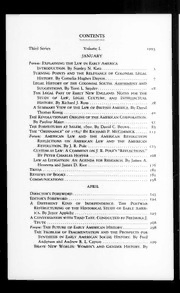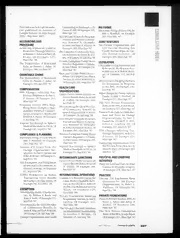
Yogi Heroes and Poets: Histories and Legends of the Naths PDF
Preview Yogi Heroes and Poets: Histories and Legends of the Naths
RELIGIOUS STUDIES / ASIAN STUDIES Yogi Heroes and Poets L O R E N Z E N A N D M This book provides a remarkable range of information on the history, religion, and U folklore of the Na¯th Yogis. A Hindu lineage prominent in North India since the eleventh Ñ O century, Na¯ths are well-known as adepts of Hatha yoga and alchemical practices said to Z increase longevity. Long a heterogeneous group, some Na¯ths are ascetics and some are householders; some are dedicated to personified forms of Shiva, others to a formless god, still others to Vishnu. The essays in the first part of the book deal with the history and historiography of the Na¯ths, their literature, and their relationships with other religious movements in India. Essays in the second part discuss the legends and folklore of the Na¯ths and provide an Y exploration of their religious ideas. Contributors to the volume depict a variety of local O areas where this lineage is prominent and highlight how the Na¯ths have been a link G between religious, metaphysical, and even medical traditions in India. I H “There is no book on the market now that can compete directly with this volume. It brings E out new data for a fresh understanding of the religious landscape of medieval India.” R — Pashaura Singh, author of Life and Work of Guru Arjan O E “Yogi Heroes and Poets expands our knowledge of historical, textual, and ethnographic S issues related to the Na¯th Yogis. These essays provide a strong sense of the context that A helped them emerge, as well as their later evolution.” — Gurinder Singh Mann, author of The Making of Sikh Scripture N D P DAVID N. LORENZEN is Professor of Asian and African Studies at the College of O Mexico. He is the author or editor of several books, including Praises to a Formless God: E Nirguni Texts from North India, also published by SUNY Press, and Who Invented Hinduism: T Essays on Religion in History. ADRIÁN MUÑOZ is Associate Professor of Comparative S Religion at the National Autonomous University of Mexico. Histories and Legends of the Na¯ths SUNY P R E S S NEW YORK PRESS Edited by David N. Lorenzen Adrián Muñoz and lorenzen hc.indd 1 9/9/11 12:35:56 PM Yogi Heroes and Poets Y H OGI EROES P AND OETS Histories and Legends of the Nāths EDITED BY DavidN.LorenzenandAdriánMuñoz PublishedbyStateUniversityofNewYorkPress,Albany ©2011StateUniversityofNewYork Allrightsreserved PrintedintheUnitedStatesofAmerica Nopartofthisbookmaybeusedorreproducedinanymannerwhatsoever withoutwrittenpermission.Nopartofthisbookmaybestoredinaretrieval systemortransmittedinanyformorbyanymeansincludingelectronic, electrostatic,magnetictape,mechanical,photocopying,recording,or otherwisewithoutthepriorpermissioninwritingofthepublisher. Forinformation,contactStateUniversityofNewYorkPress,Albany,NY www.sunypress.edu ProductionbyKelliW.LeRoux MarketingbyMichaelCampochiaro LibraryofCongressCataloging-in-PublicationData Yogiheroesandpoets:historiesandlegendsoftheNaths/editedbyDavidN. LorenzenandAdriánMuñoz. p.cm. Includesbibliographicalreferencesandindex. ISBN978-1-4384-3891-7(hardcover:alk.paper) 1.Nathasect. 2.Yoga. I.Lorenzen,DavidN. II.Muñoz,Adrián. III.Title:Historiesandlegendsof theNaths. BL1278.54.Y642011 294.5'436—dc22 2011004268 10 9 8 7 6 5 4 3 2 1 Contents Preface vii Introduction DavidN.LorenzenandAdriánMuñoz ix PartI:YogisinHistory 1.TheNathsinHindiLiterature PurushottamAgrawal 3 2.ReligiousIdentityinGorakhnathandKabir: Hindus,Muslims,Yogis,andSants DavidN.Lorenzen 19 3.DifferentDrumsinGwalior:MaharashtrianNathHeritages inaNorthIndianCity DanielGold 51 4.TheInfluenceoftheNathsonBhimaBhoiandMahimaDharma IshitaBanerjee-Dube 63 PartII: TheologyandFolklore 5.OntheMagnitudeoftheYogicBody DavidGordonWhite 79 6.AwakeningGenerosityinNathTalesfromRajasthan AnnGrodzinsGold 91 v vi CONTENTS 7.Matsyendra’s“GoldenLegend”:YogiTalesandNathIdeology AdriánMuñoz 109 8.WhatShouldMīnanāthDotoSaveHisLife? LubomírOndračka 129 9.TheMatsyendrasamִhitā:AYoginī-centered Thirteenth-centuryTextfromtheSouthIndianŚāmbhavaCult CsabaKiss 143 Notes 163 Bibliography 199 ListofContributors 219 Index 221 Preface Much scholarly work has been done in recent years on Sanskrit texts about yoga philosophy and yoga practices. Fewer discussions have appeared on the religious sect that has been the main carrier of yoga traditions in India, the sect known as the Nath Panth or Kanphata Panth.The principal aim of this collection of essays is to help redress this imbalance with discussions about the history of the Nath yogis and about the vernacular folklore and poetry that they have produced. Theprimarysourcematerialsfortheessaysincludefolktales,songs,verses,didactic texts,andoralinterviewsandrecitations.Thesesourceswerewrittenorspokenina variety of languages: modern Hindi, old Hindi, Rajasthani, Bengali, Oriya, and Sanskrit. Theeditorswouldliketothankallthecontributorsfortheirhelpinorganizing the collection and editing their own essays. Thanks in part to the wonders of the Internet,ithasbeenpossibletoefficientlyassembleateamofscholarsfromseveral different countries: the Czech Republic, Great Britain, India, Mexico, and the UnitedStates.Shortbiographicalnotesoneachofthecontributorsarefoundatthe endofthisbook. NotalltheauthorsoftheessayshaveuseddiacriticstotranscribeIndianwords, but where diacritics are used they follow standard practice for the languages con- cerned. In most chapters, personal names and non-italicized words in Hindi or other vernacular languages appear without diacritics. However, words of these lan- guageswritteninitalics(includingbooktitles)donormallyhavediacritics.Sanskrit words(e.g.,haִthayoga),usuallydohavediacritics,evenwhennotinitalics.Sanskrit words that are common in English sometimes appear in their common English spellings (e.g., Shiva, Shakta, Vishnu, Vaishnava, Krishna, Shankaracharya) but in vii viii PREFACE essays using mainly Sanskrit sources appear in their more scholarly form with dia- critics (e.g., Śiva, Śākta, Viִsnִu, Krִִsnִa, etc.).The non-aspirated “ch” sound in ver- nacular words is usually written as “ch” (e.g., Chand), but in Sanskrit words it is usually written as “c” (e.g., Candra). Palatal “ś” and cerebral “ִs” in non-italicized Hindiwordsarebothusuallywrittenas“sh.” Much help has also been received from our colleagues in the Centro de Estu- diosdeAsiayÁfricaofElColegiodeMexicoandfromitsadministrativestaff.We particularly would like to thank the director of the Centro, Benjamín Preciado Solís, and its administrative assistant, Adriana Villanueva. Many thanks also to NancyEllegateandherteamatStateUniversityofNewYorkPress. Introduction David N. Lorenzen and Adrián Muñoz Alldisciplessleep,buttheNathSatgurustaysfullawake. TheAvadhutabegsforalmsatthetengates. —GorakhBānīpad53 The Hindu religious path or sect of the Naths is variously known as the Nath Panth or the Nath Sampraday. Its followers are called Nath yogis, Nath Pan- this, Kanphata yogis, Gorakhnathis, and Siddha yogis, among other names. Some- times the term avadhūta is used, although this term is applied to ascetics of other Hindu groups as well. Most Nath yogis claim adherence to the teachings of the early yogi, Gorakִsanātha (in Hindi Gorakhnath).The school of yoga most closely associated with the Naths is the well-known one of haִtha yoga. In more general terms,thecombinedreligiousandyogicteachingsoftheNathsarecalledtheNāth- mārga (the Path of the Naths), the Yoga-mārga (the Path of yoga), or the Siddha- mata(thedoctrineoftheSiddhas). Thetermsiddhameans“someoneperfectedorwhohasattained[spiritual]per- fection.” A Siddha (from the Sanskrit root SIDH, “to succeed, to perfect”) is an ascetic who has gained different perfections or “successes” (siddhis), the most famousbeingtheeightmagicalsiddhisachievedthroughintenseyogicpractice.The wordnāthornāthaliterallymeans“lord,master;protector,shelter,”andinthepres- entcontextdesignates,ontheonehand,afollowerofthesectfoundedbyorassoci- ated with Gorakhnath and, on the other hand, someone who has controlled the ix
The list of books you might like

Rich Dad Poor Dad

$100m Offers

The 48 Laws of Power

Shatter Me Complete Collection (Shatter Me; Destroy Me; Unravel Me; Fracture Me; Ignite Me)
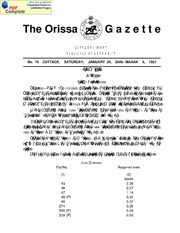
Odisha Gazette, 2006-01-07, No. 78
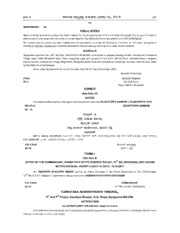
Karnataka Gazette, 2014-01-16, Part-5

Выступления полномочного представителя Президента РФ в Конституционном Суде Российской Федерации. 2015–2018 годы. Сборник. Том 2. 2017–2018 годы

Compressors: Selection and Sizing

August 2016 PART I

byle s lie Pine ada

Greek Government Gazette: Part 2, 2013 no. 63

Актуальные проблемы частного и публичного права. Вып. 10. Конференция

by Alexandre Dumas adapted by Carol M. Rice
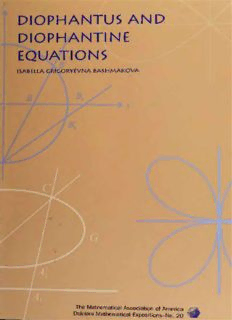
Diophantus and Diophantine Equations

Annamaachchaaryarin Kiirttanaikal’

Tirun-et’un-taand-t’akattil Akapporul’
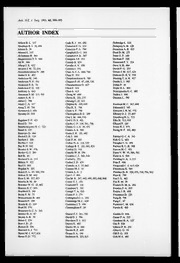
The Australian and New Zealand Journal of Surgery 1993: Vol 63 Index

International Political Science Review 1993: Vol 14 Index
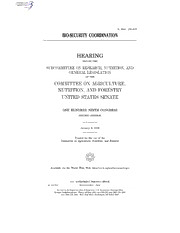
BIO-SECURITY COORDINATION
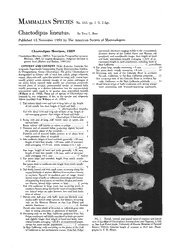
Chaetodipus lineatus
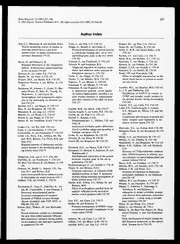
Developmental Brain Research 1993: Vol 74 Index
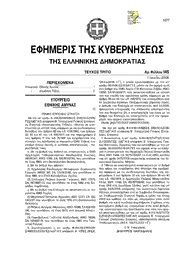
Greek Government Gazette: Part 3, 2006 no. 145
